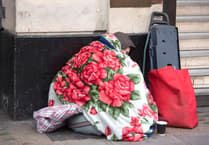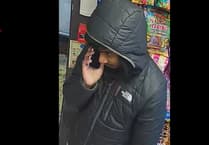WE were delighted to welcome John Dyke, yet again, to speak on the subject of Two Hundred Years of Photography to Thorverton History Society on Friday, October 4.
John had already kindly provided a fascinating insight into his parish church links and recent developments in The Missing Princes Project at Coldridge.
This time his talk touched upon another personal passion and took us from the first photographs ever taken, right through to the digital age and the controversial use of AI.
All aspects of photography were covered from the grave to the dramatic to the comic to the glamorous and most interesting were the number of actual camera models available to handle and experience, provided by the speaker.
Dating back to 1544 the initial workings of Camera Obscura were the fore runners of our modern day camera.
A fine example of this use of mirrors and reflected images is (luckily for us) to be seen and experienced at the Clifton Observatory.
Using a series of mirrors and lenses to reflect a 360 degree panoramic image onto a viewing dish, William West’s Camera Obscura is one of the only working Camera Obscura open to the public in the UK.
This marvellous piece of Victorian engineering was first built in 1828 and still offers incredible experiences to visitors today, sometimes described as “Victorian CCTV” due to the hidden bird’s-eye view it offers.
Photography originated as scientists continued to explore optics and chemistry, discovering light-sensitive materials that darken when exposed to light.
In 1826, Joseph Nicéphore Nièpce took the first preserved camera photograph on bitumen, while Thomas Wedgwood was at a similar time producing images using silver nitrate.
By 1839 Louis Daguerre and Niépce together presented the daguerreotype using a more commercial process on copperplate, while by circa 1840 William Henry Fox Talbot develops the negative-positive process.
The first recorded photograph of a human face is attributed to one Dorothy Draper in New York although again Louis Daguerre's 1838 photograph of the Boulevard du Temple, Paris taken in 1838, is a photograph of a Paris street scene which shows a man standing along the Boulevard du Temple getting his shoes shined, now widely believed to be the earliest extant photograph of human figures because he stood so still.
The first selfie is recorded as Robert Cornelius in 1839!! Developments were moving on apace.
By 1860 Roger Fenton was recording the conflict in the Crimea and in 1861, Matthew Brady, the American Civil War conflict.
Morbidly photographs were often used to record the dead for families, particularly at a time of such high infant mortality.
However, in 1888, George Eastman prepared a roll of camera film and cameras became more portable and were finally able to record images in colour (1855-1907 Louis Lumiere).
On May 17, 1861, Scottish physicist Sir James Clerk Maxwell presented possibly the very first colour photograph at the Royal Institution. The photograph showed a tartan ribbon and was made by Thomas Sutton according to the three-colour method proposed by Maxwell as early as 1855.
Familiar names such as Leica, Pentax and Kodak began to make cameras more readily available to the enthusiast and the movies recorded moving pictures.
By 1957 the first digital photograph was achieved so that nowadays the prime upgrade to your phone is most likely to be the digital camera and the quality of our own images.
Even newer in the mix have come the fears and caveats of AI to fabricate and enhance images.Photography and its ability to record amazing and graphic images continue to advance.
This was a fascinating explanation of process and the timeline that has influenced our lives today.We are entirely grateful to John for such a thorough and entertaining talk.
K A Marshall
-at-the-.jpeg?width=752&height=500&crop=752:500)




Comments
This article has no comments yet. Be the first to leave a comment.